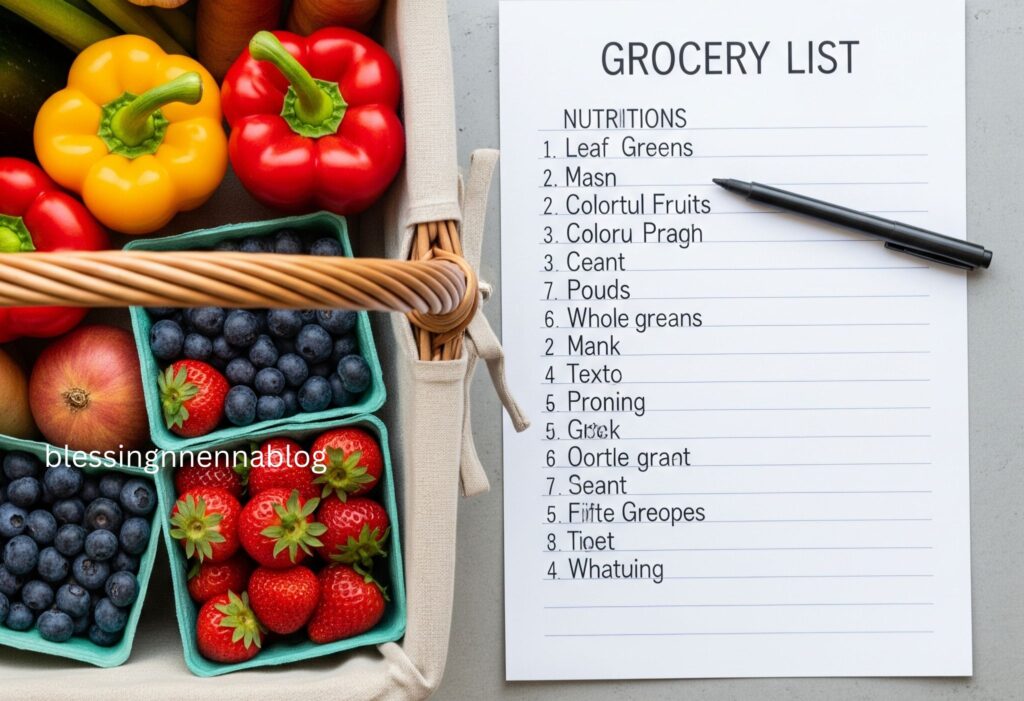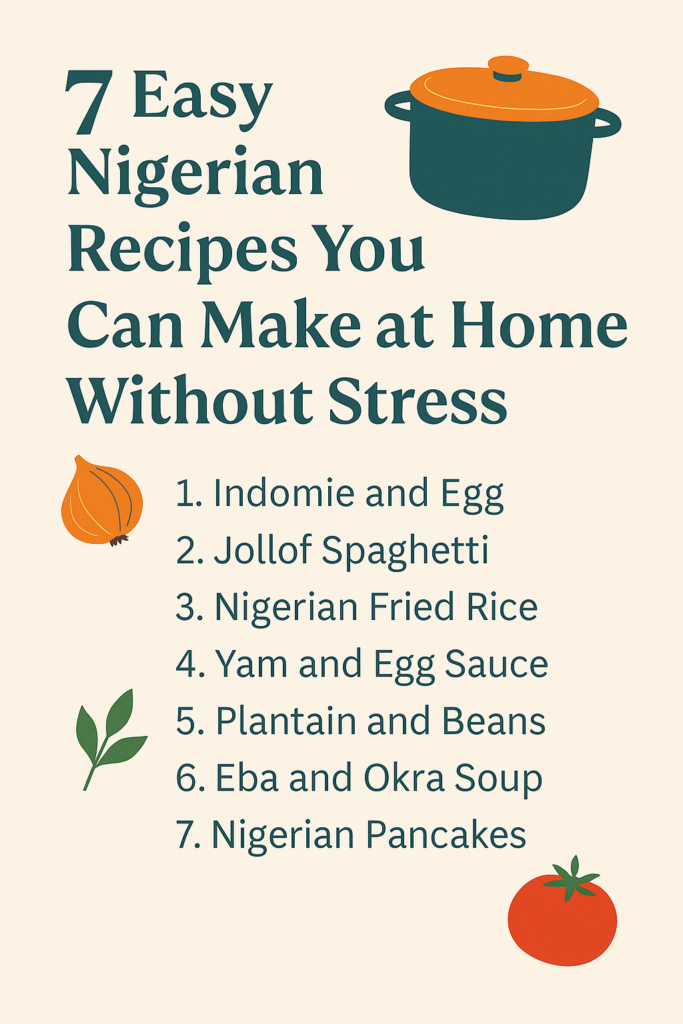Why a Healthy Grocery List Matters
Grocery shopping without a plan can lead to impulse buys, unhealthy choices, and food waste. That’s where a healthy grocery list comes in—it helps you:
-
Stick to your nutrition goals
-
Save money by avoiding unnecessary purchases
-
Make mealtime easier and stress-free
Whether you’re eating on a budget or just aiming to make smarter food choices, building the right grocery list is the first step.
Related: Eating on a Budget: Nutritious Foods That Save Money
Before You Shop: A Quick Prep Guide
Creating a smart list starts before you even hit the store:
-
Plan Your Meals for the Week – Focus on meals that use overlapping ingredients to reduce waste.
-
Take Inventory – Check what you already have in your fridge, freezer, and pantry.
-
Shop the Season – Seasonal fruits and vegetables are fresher and often cheaper.
The Anatomy of a Healthy Grocery List

Here’s how to break down a balanced and budget-friendly grocery list by category:
1. Fresh Produce
Fill half your cart with a variety of fruits and vegetables. Choose:
-
Leafy greens (spinach, kale, romaine)
-
Cruciferous veggies (broccoli, cauliflower, Brussels sprouts)
-
Colorful vegetables (bell peppers, carrots, tomatoes)
-
Low-sugar fruits (berries, apples, oranges, bananas)
Tip: Frozen produce is just as nutritious and often cheaper. Are frozen vegetables healthy? – Cleveland Clinic
2. Lean Proteins
Essential for muscle maintenance, energy, and feeling full longer. Include:
-
Chicken breast or thighs
-
Canned tuna or salmon
-
Eggs
-
Tofu or tempeh
-
Greek yogurt or cottage cheese
-
Beans and lentils (great plant-based options)
Explore more: How Fiber Supports Digestion and Weight Loss
3. Whole Grains
Swap refined carbs for fiber-rich, slow-digesting grains:
-
Brown rice
-
Quinoa
-
Rolled oats
-
Whole wheat pasta
-
Barley or bulgur
4. Healthy Fats
Fats are crucial for brain health, hormone production, and satiety. Add:
-
Avocados
-
Olive oil
-
Nuts (almonds, walnuts)
-
Nut butters (natural, no added sugar)
-
Seeds (chia, flax, pumpkin)
5. Dairy or Dairy Alternatives
Choose low-sugar and calcium-rich options:
-
Unsweetened almond, oat, or soy milk
-
Greek yogurt
-
Cheese in moderation (preferably hard cheeses)
6. Pantry Staples
Don’t forget the essentials to keep your kitchen functional:
-
Canned beans, tomatoes, or coconut milk
-
Whole grain bread or wraps
-
Spices and herbs (turmeric, cumin, basil, etc.)
-
Broth or stock (low-sodium)
7. Beverages
Stay hydrated with:
-
Filtered water
-
Herbal teas
-
Coconut water (in moderation)
Helpful read: Why Hydration Matters: Health Benefits of Drinking Water
Foods to Limit or Avoid
As you make your list, try to minimize or skip:
-
Sugar-sweetened beverages
-
Ultra-processed snacks
-
Refined white bread and pasta
-
Artificially flavored yogurts
-
Pre-made sauces high in sodium/sugar
Also see: How Sugar Affects Your Body: More Than Just Weight Gain
Final Thoughts: Make Your Cart Match Your Goals
A healthy grocery list is your foundation for better eating habits. By focusing on whole foods and planning ahead, you take control of your health—right from the store aisle.
The next time you shop, take your list and skip the guesswork. Your body (and budget) will thank you.
Discover more from Blessing Nnenna Blog
Subscribe to get the latest posts sent to your email.



